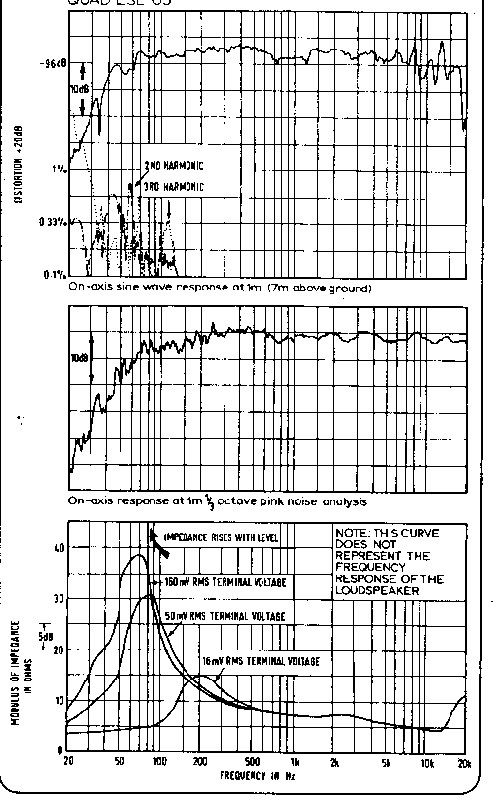| -excerpt from Hifi News Original September 1981, Reprint Februari 1999. It is now time to look at the measurements, carried out as always by James Moir and Associates at about 7 m above ground in the open air. The sine response was taken at 1 m on axis, and is within ~2 dB from about 60Hz to 8kHz. being only 6dB down at 35Hz. In a room the ground reflection extends the bass response, and Quad have tailored the bass roll-off to avoid boom. A few peaks and troughs at the highest frequencies are partly due to reflections at the dust-cover, but our measurements are higher than those obtained by other laboratories. Since movements of the microphone produce some shifts in position and amplitude, and since we were measuring at 1 m instead of the 2 m for which the far field is designed to be flat, we suspect that this is another example of the influence of geometry on sharp features of the sine response, often produced by boundary conditions. Such features would not normally be audible, even if 'true' in a room, and were not heard. The third-octave pink noise response confirms this. The distortion performance proved difficult to measure, because we were limited by the swept-oscillator distortion content! The distortion plot was amplified by 20 dB from 20 to 150 Hz, above which the loudspeaker distortion could not be measured by sweep methods. Single-frequency measurements at various points throughout the band showed the distortion to be generally below 0 1%, and frequently as low as 0,03%, where it was close to the residual noise level. I have never seen results like these for a fundamental output of 96 dB spl at 1 m from any other loudspeaker. Even the levels below 150 Hz are better than almost all conventional designs, and the 3% second harmonic at 20 Hz (due to the rise in flux density in the input transformers) is quite respectable so far outside the intended passband. (OCR Mats Törnquist) |
 |